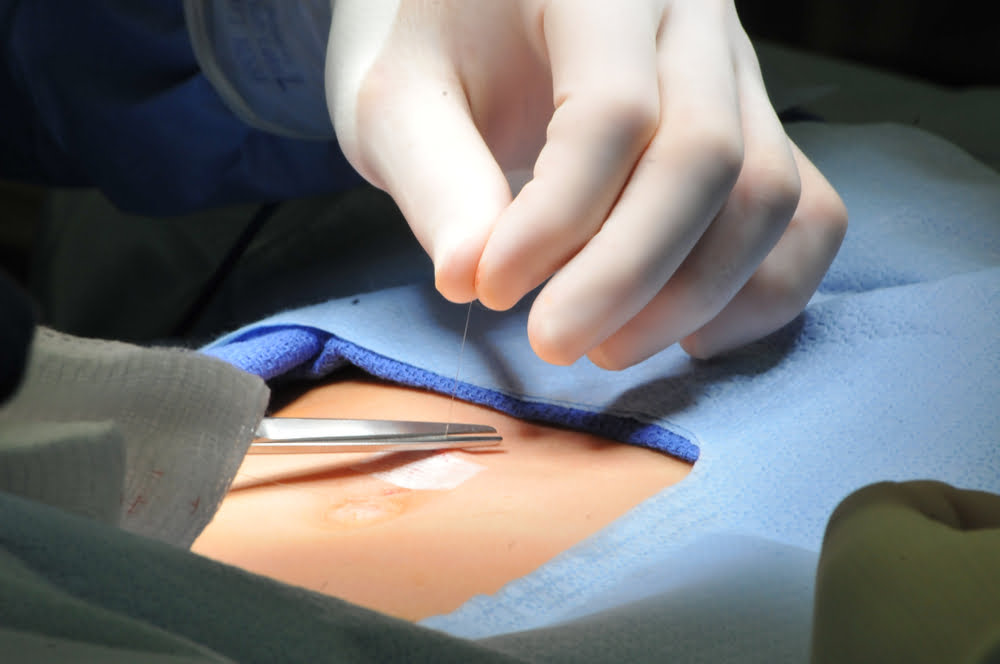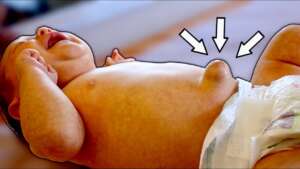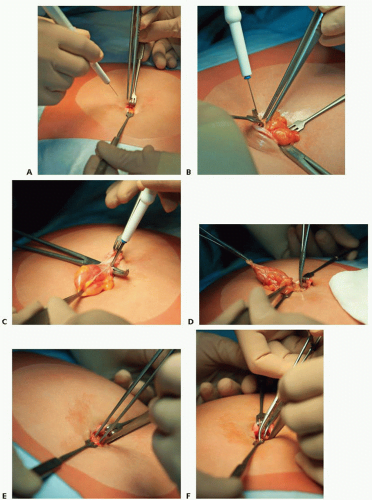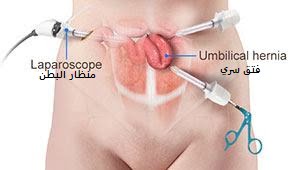Umbilical hernia surgery in Türkiye
Umbilical hernia surgery is a procedure to repair an umbilical hernia. The latter is the eruption or penetration of part of the intestine or abdominal cavity tissue through a weak point in the surrounding abdominal wall. This appears as a bulge or cyst that forms in the abdomen and can develop in young children and adults.

Umbilical hernia in children:

Umbilical hernia is common in young children, especially in premature babies. 75 percent of newborns with a birth weight of less than 1.5 kilograms suffer from an umbilical hernia. This occurs shortly after birth when the muscles around the navel do not close. This leaves a weak point through which the umbilical hernia can push. Fortunately, the umbilical hernia that the infant suffers from closes on its own by the age of 3 to 4 years in many cases, but if the hernia persists by the time the child reaches 4 years, surgery is recommended.
Umbilical hernia in adults:
Umbilical hernia can also occur in adults, especially in the event of weight gain, heavy lifting, or persistent coughing. It is more common in females than males, and the risk of umbilical hernia increases if women undergo multiple pregnancies.
Symptoms of umbilical hernia:
An umbilical hernia is caused by a soft lump or bulge near the navel. In children, the bulge appears only when crying, coughing or straining. It is usually painless. However, an umbilical hernia that develops during puberty may cause abdominal discomfort.
Diagnosis:
During a physical examination, a doctor can diagnose an umbilical hernia, determine its type, and determine the level of danger, such as the risk of obstruction. He or she may order an abdominal ultrasound, x-rays, or blood tests.
When to see a doctor:
A doctor should be visited in the following cases:
- Suffering from pain when bloating.
- The appearance of flatulence in parallel with vomiting.
- A change in the color of the bulge or its enlargement.
Risk factors:
Age: Babies born prematurely have a higher risk of developing an umbilical hernia than adults.
Obesity: Obese children and adults face a higher risk of developing an umbilical hernia than individuals of normal weight for their height and age.
Coughing: Coughing for a long time may increase the risk of a hernia, due to the pressure of the cough on the abdominal wall.
Multiple pregnancies: The risk of an umbilical hernia increases when a woman carries more than one baby as part of her pregnancy.
Complications:
Complications are rare in children, but complications occur when the prominent abdominal tissue becomes trapped and cannot be pushed back into the abdominal cavity, which reduces blood flow to the section of the trapped intestine, abdominal pain and tissue damage. But if the blood is cut off from the trapped part, this leads to tissue death and the spread of infection throughout the abdominal cavity, which leads to a life-threatening situation. Adults develop intestinal obstruction and emergency surgery is required to treat these complications.
Treatment:
Not all umbilical hernias require treatment due to the disappearance and self-treatment of most of them, especially in children.
Infants and children: In most cases, the hernia closes without treatment by the age of 12 months. Your doctor may be able to push the hernia into your abdomen. Surgery may be ordered if:
- The hernia grows after the child is one to two years old.
- Survival of the hernia to the age of 4 years.
- Entering the intestine into the hernia sac, which prevents or reduces bowel movement.
- incarcerated hernia
Adults: Surgery is usually recommended for adults, with the aim of preventing potential complications, especially if the hernia grows or begins to cause pain.
Umbilical hernia surgery:

The surgery is a small and quick operation, during which the bulge is pushed back, the abdominal wall is strengthened, and the person undergoing the surgery can go home the same day. It takes 20 to 30 minutes.
The procedure begins with the surgeon making an incision at the base of the navel and pushing the fatty mass or bowel back into the abdomen, repairing the hernia using mesh and suturing the muscles together over the weak area of the abdominal wall using dissolvable stitches to strengthen it. Then a pressure bandage is placed over the hernia for 4 to 5 days.
Laparoscopic surgery:

Laparoscopic hernia repair is a minimally invasive procedure. During the procedure, the surgeon makes several small incisions around the site of the hernia bulge. A long, thin tube with a lighted camera at the end is then inserted into one of the incisions. This allows the surgeon to see inside the abdominal cavity on a video monitor and treat the hernia as before.
After the operation
The patient is taken to the recovery room after the procedure. The medical staff monitors vital signs including breathing, oxygen, heart rate, temperature, and blood pressure. The doctor gives pain medications and instructions for keeping the suture clean. A follow-up appointment is scheduled within two weeks. Most people are able to return to their activities within a few weeks. after surgery.

Umbilical hernia surgery in Türkiye
The medical staff of surgical teams, doctors and consultants in REHABTÜRK can offer the best treatment options and free consultations by striving to keep abreast of the latest medical technologies and methods.
